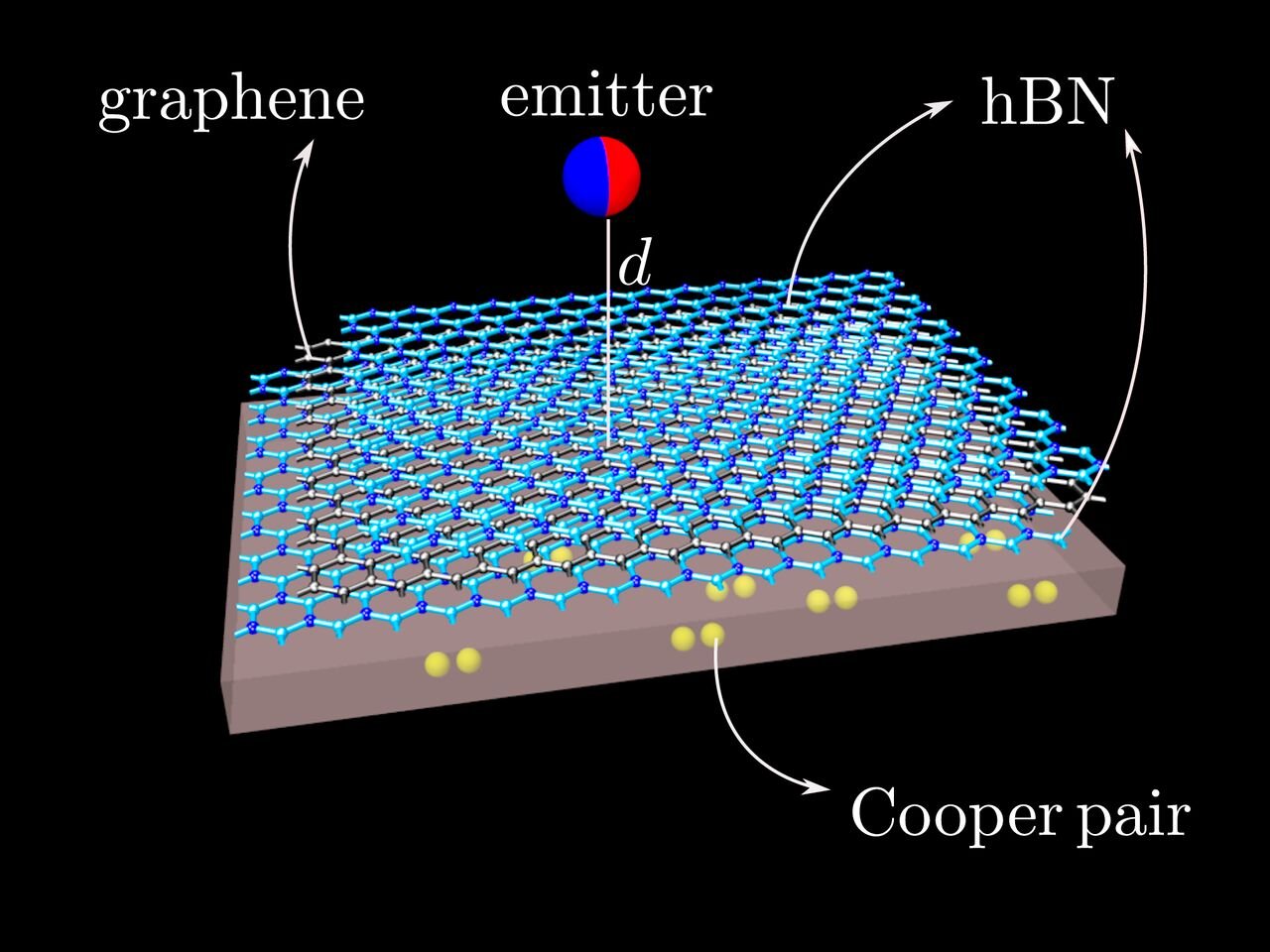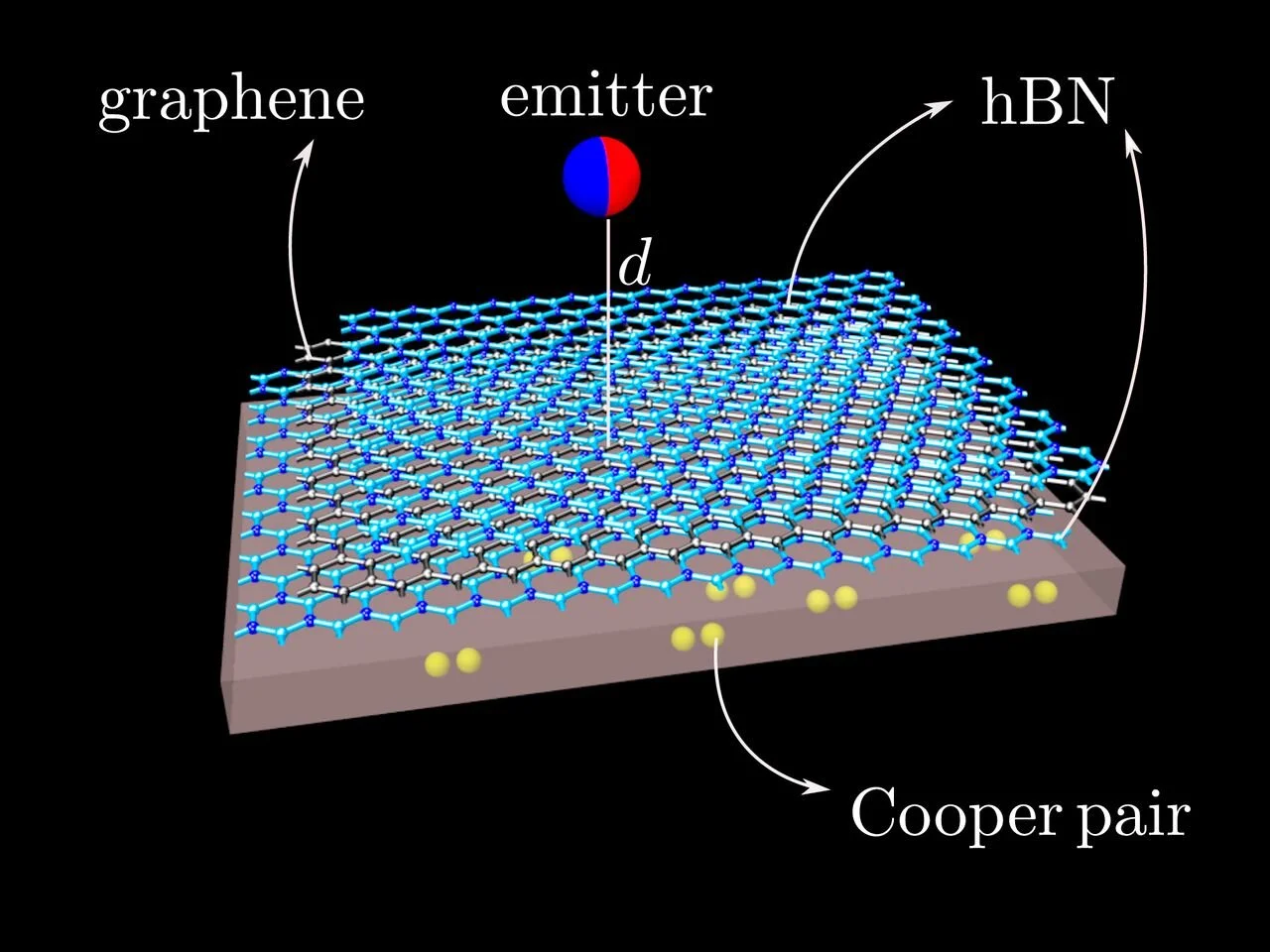
Graphene helps to shed light on superconductors’ dark physics
January 27, 2021
Superconductors are rich in complex and intriguing phenomena, such as the Meissner effect, allowing, for example, for levitating trains. Other effects of superconducting physics are dark, that is, they do not interact with light (electromagnetic radiation) being, therefore, difficult to observe in practice. One such dark corners are the so-called Higgs mode, an oscillation of the “sea” of Cooper pairs (the charge carriers in superconductors). The Higgs mode is “invisible” to conventional electromagnetic radiation. Now it has been found that graphene may help to brighten things up.
A collaboration between INL – International Iberian Nanotechnology Laboratory, the University of Minho, the University of Southern Denmark, Columbia University, The Barcelona Institute of Science and Technology, the Technical University of Denmark has studied the behaviour of graphene plasmons (oscillations of graphene’s electron sea) in close proximity to a superconductor. They found that the superconductor’s Higgs mode can be detected through the way the graphene plasmons (as mentioned in https://science.sciencemag.org/content/360/6386/291, and in https://science.sciencemag.org/content/368/6496/1219) are modified by the presence of the superconductor. Besides revealing the possibility of probing the behaviour of superconductors with graphene plasmons, this work suggests that combining nanophotonics with the strongly correlated matter may be fruitful for the development of new quantum technologies.
This research, involving Nuno Peres, INL Electrodynamics of 2D Materials Research Group Leader, and António Costa, Research Fellow in the same group, was now published in the prestigious scientific journal Proceedings of the National Academy of Science.
View the full article can be found here: https://www.pnas.org/content/118/4/e2012847118


